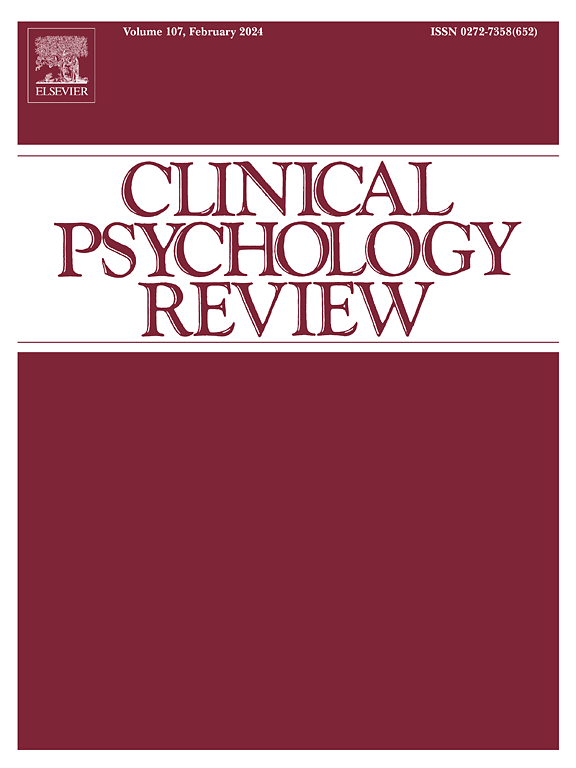饮食失调死亡率的荟萃分析:2010年至2024年文献更新
IF 12.2
1区 心理学
Q1 PSYCHOLOGY, CLINICAL
引用次数: 0
摘要
据报道,饮食失调(EDs)患者的死亡率升高。然而,在过去的十年中,没有荟萃分析提供了一个更新的、全面的综合死亡率,涵盖所有ED诊断,同时探索潜在的调节因素。我们从2010年到2024年10月29日对四个数据库(PsycINFO、MEDLINE、Embase和Web of Science)进行了系统检索。研究报告了ED患者(包括正式诊断和自我报告)的标准化死亡率(SMRs)。进行随机效应荟萃分析,汇总各研究的估计值。meta回归检验异质性的预测因子。效应大小的smr荟萃分析显示,ED患者的死亡风险升高(无论ED亚型);鼻中隔黏膜下切除术后加权= 3.39(95 %独联体:2.90,3.95),p 2 = 95.1 %,Q (df = 73) = 1492.39, p本文章由计算机程序翻译,如有差异,请以英文原文为准。
A meta-analysis of mortality rates in eating disorders: An update of the literature from 2010 to 2024
Elevated mortality rates have been reported in individuals with eating disorders (EDs). However, no meta-analysis in the past decade has provided an updated, comprehensive synthesis of mortality across all ED diagnoses while exploring potential moderating factors. We conducted a systematic search in four databases (PsycINFO, MEDLINE, Embase and Web of Science) from 2010 to 29 Oct 2024. Studies that reported standardized mortality ratios (SMRs) in individuals with a diagnosed ED (including formal diagnoses and self-reports) were included. Random-effects meta-analyses were conducted to pool estimates across studies. Meta-regression was conducted to examine predictors of heterogeneity. Meta-analysis of SMRs of effect sizes revealed elevated mortality risk for individuals with an ED (regardless of ED subtype); weighted SMR = 3.39 (95 % CIs: 2.90, 3.95), p < .001, I2 = 95.1 %, Q(df=73) = 1492.39, p < .001. SMRs were highest for individuals with anorexia nervosa (5.21; k = 30), followed by eating disorder not otherwise specified (2.51; k = 8); bulimia nervisa (2.20; k = 18) and binge eating disorder (1.46; k = 3). Individuals with EDs demonstrate markedly heightened mortality rates, especially among those with anorexia nervosa. Our findings are crucial for identifying key factors influencing mortality in EDs, guiding targeted interventions to reduce preventable deaths.
求助全文
通过发布文献求助,成功后即可免费获取论文全文。
去求助
来源期刊

Clinical Psychology Review
PSYCHOLOGY, CLINICAL-
CiteScore
23.10
自引率
1.60%
发文量
65
期刊介绍:
Clinical Psychology Review serves as a platform for substantial reviews addressing pertinent topics in clinical psychology. Encompassing a spectrum of issues, from psychopathology to behavior therapy, cognition to cognitive therapies, behavioral medicine to community mental health, assessment, and child development, the journal seeks cutting-edge papers that significantly contribute to advancing the science and/or practice of clinical psychology.
While maintaining a primary focus on topics directly related to clinical psychology, the journal occasionally features reviews on psychophysiology, learning therapy, experimental psychopathology, and social psychology, provided they demonstrate a clear connection to research or practice in clinical psychology. Integrative literature reviews and summaries of innovative ongoing clinical research programs find a place within its pages. However, reports on individual research studies and theoretical treatises or clinical guides lacking an empirical base are deemed inappropriate for publication.
 求助内容:
求助内容: 应助结果提醒方式:
应助结果提醒方式:


